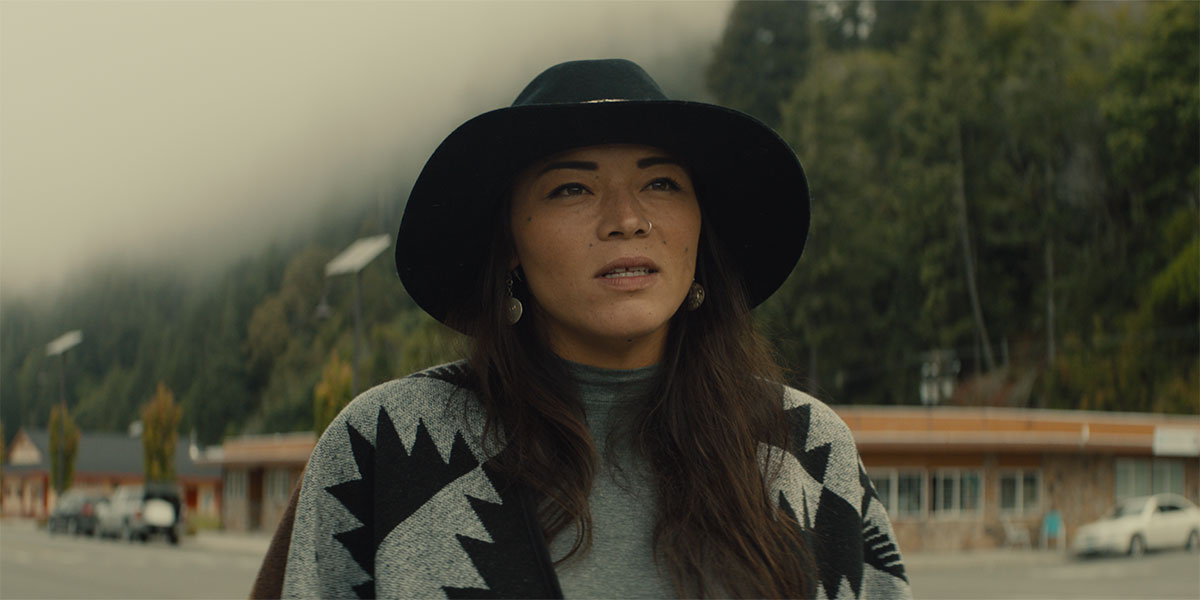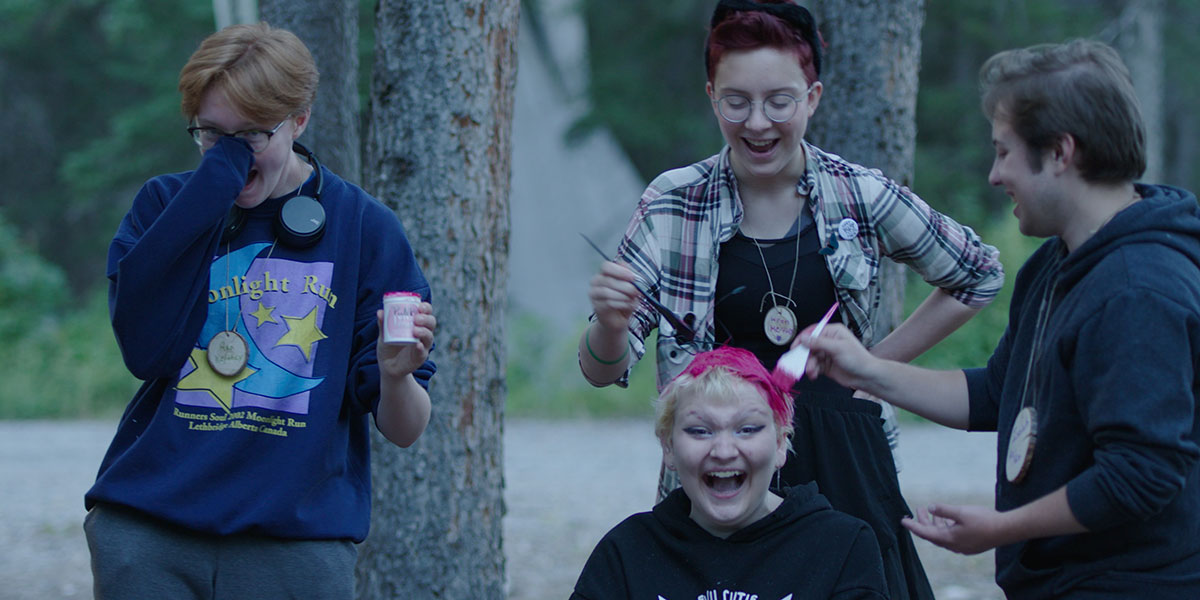Boil Alert
(Canada/USA, 104 min.)
Dir. James Burns, Stevie Salas
Programme: TIFF Docs (World Premiere)
Call Mohawk artist and activist Layla Staats a water warrior. Directors James Burns (The Water Walker) and Stevie Salas (Rumble: The Indians Who Rocked the World) follow Staats as she confronts the ongoing institutionalized violence of colonialism and the intergenerational trauma caused by Canada’s residential school system. That’s a big glass of water for anyone to handle, but Boil Alert positions Staats as a formidable fighter amid a problem that’s bubbling over.
The focus of the documentary—or, one focus, let’s say—is the urgent state of drinkable water among Indigenous communities. Staats, who hails from the Six Nations of the Grand River, but was raised in nearby Brantford, draws upon her roots and the wisdom of her late grandfather to guide her.
Her learning expedition is also a soul-searching journey—i.e. the second focus of the documentary—in which she learns about the Indigenous heritage that was kept at a distance when she was a child. She reflects upon the coping mechanisms entailed with the trauma she inherited, but finds motivation to reclaim her culture. Boil Alert has a lot to reconcile here and viewers might find themselves conflicted with the two-pronged odyssey. However, there’s no denying the urgency of the stories of the communities depicted in the film, and the decades of neglect in dire need of redressing.
From First Nation to First Nation
For example, the film follows Staats as she visits the fly-in community of Neskantaga First Nation in Northern Ontario. The community has no potable water and is one of many Indigenous communities living with a seemingly permanent boil-water advisory. Staats speaks with residents who can’t recall the last time they turned on the tap and filled a glass to drink. What’s a daily basic right in one community becomes a distant luxury in another.
The matter worsens when Staats accompanies the relief effort. Planes fly in cases of bottled water that residents must ration. They barely get two litres per day each, but that little bit of water amounts to a lot of plastic. Boil Alert observes an escalating environmental nightmare as Neskantaga First Nation becomes overrun with single-use plastic bottles. Waste is everywhere and many residents simply have to burn the plastic due to the amount of space it occupies. This inevitability compacts the environmental damage by putting toxins in the air and, in turn, the rain.
Staats’ travels bring her south of the border to the USA where the situation for the Navajo nation in Church Rock, New Mexico, is equally dire. Contamination from a uranium mine means no clean drinking water, but also toxic terrain. A resident guides Staats to a contamination site where his meter clocks levels of radiation within the danger zone. This story illustrates the larger environmental impact of the neglect for Indigenous communities as contamination on reserves spills out to the larger water networks that feed the nation.
Grassy Narrows and Nora Sneaky
Poetic, if tonally disjointed, interludes share the mythological power of water and its maternal role. While visually striking, these interludes somewhat rupture the follow to Staats’ expedition. They tend to complement her story, more than those of the communities.
In Grassy Narrows, Staats meets with residents reeling from the effects of mercury poisoning. Dangerous levels of mercury cause rashes and mobility issues, which compound perceptions of Indigenous people by settlers. Even first responders are quick to dismiss someone displaying a loss of motor control as just another drunk when they’re displaying symptoms of mercury poisoning.
It’s here, too, that Staats finds the most compelling testimonies of the film. Speaking with 19-year-old Nora Sneaky, Staats gets a heartbreaking account of the rate of suicide among Indigenous youths. (A point that’s doubly poignant by the film’s end.) Nora speaks of hopelessness and a shared sense of worthlessness among her peers. When the government can’t even bother to provide clean drinking water, a basic necessity, and lets neglect fester year upon year, that does something to one’s psyche, Nora notes. As Staats listens empathetically and the camera captures Nora’s sense of defeat, Boil Alert confronts a dire situation.
Then the film travels further north to the Wet’suwet’en territory in British Columbia. Staats joins land defenders protesting the aggressive build of the coastal pipeline on native land. The doc captures the gripping footage of the blockades and surveillance in what looks and feels like a militarized zone amid the idyll forests. Boil Alert observes elders confronted by security in aggressive altercations that see Staats among the parties charged for defending the land and river.
Red Flags and Gaps
The fourth act of Boil Alert delivers some bracing footage as it follows Staats to Wet’suwet’en, but it also complicates an uneasy tension that mounts throughout the film. Staats offers a poetic perspective and an empathetic guide, but she brings relatively limited expertise on the topic. She’s ultimately a surrogate for an audience looking to be educated.
Moreover, by the fourth trip in the doc, it isn’t clear how Staats funds her extensive travelling. Nor is it evident why she chooses these specific sites of protest. Particularly since Boil Alert begins by situating Staats as an outsider figure, her authority on the front lines might raise eyebrows.
Her narration throughout the film tells of being raised outside the reserve, and of the lateral effects of residential schools and colonialism that drove her elders to advise her to steer clear of Indian land. She’s very open that her interest in water rights shares an intimate relationship with her desire to reconnect with her Mohawk roots, but the Wet’suwet’en chapter most resembles a fact-finding mission that latches onto a trending topic. Moreover, a quick Google search yields some rumblings that her position on the front lines wasn’t welcomed by all locals, which doesn’t help that Boil Alert spends so much time “selling” Staats.
These concerns, however, don’t change the cause for which Staats and the film advocate. And it’s hard to deny that she’s a compelling guide who connects with the people she encounters. Boil Alert makes clear the relationship between contemporary environmental disasters and the legacy of violence from Canada’s residential schools, which simply takes a new form via resource extraction as settler Canada prospers at the expense of Indigenous people. As Boil Alert tours Indigenous communities throughout Canada, it observes a cause to which politicians both in power and opposition pay ample lip service, but take little action. One can only leave a boiling on the stove before the water’s all gone.













